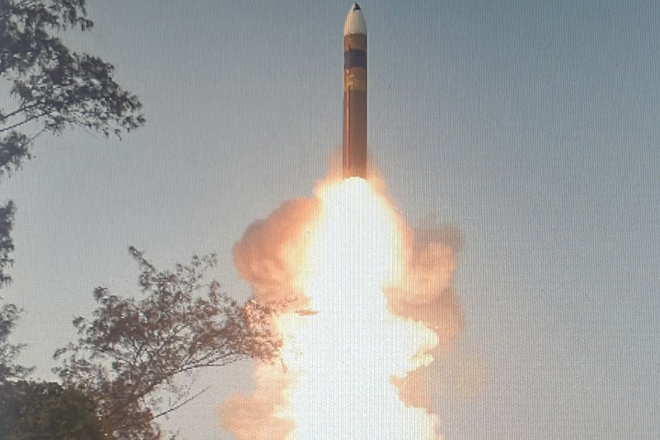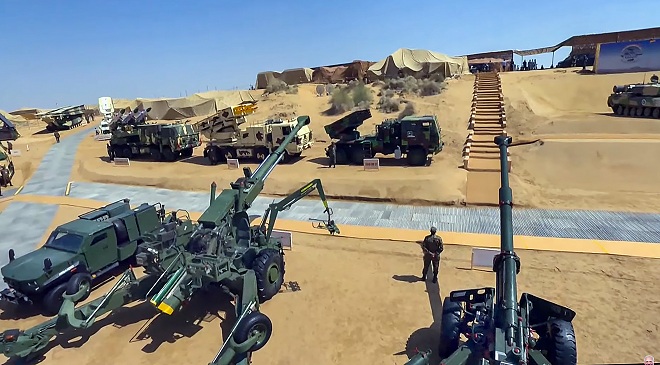
DRDO conducted first successful flight test of indigenously developed Agni-V missile with Multiple Independently Targetable Re-Entry Vehicle ( MIRV) technology. Photo: DRDO (Twitter, X)
NEW DELHI (PTI): India on Monday successfully carried out the first flight test of indigenously developed Agni-5 missile, capable of deploying multiple warheads, under its 'Mission Divyastra', joining a select group of nations having such a capability.
The missile with 'multiple independently targetable re-entry vehicle (MIRV)' tested from APJ Abdul Kalam Island in Odisha accomplished the designed parameters, the Defence Ministry said.
Prime Minister Narendra Modi and Defence Minister Rajnath Singh congratulated the scientists of Defence Research and Development Organisation (DRDO) for the successful test.
"Proud of our DRDO scientists for Mission Divyastra, the first flight test of indigenously developed Agni-5 missile with Multiple Independently Targetable Re-entry Vehicle (MIRV) technology," PM Modi said on 'X'.
The director of 'Mission Divyastra' is a woman scientist.
The MIRV feature ensures that a single missile can deploy multiple warheads at different locations, sources said.
Agni-5 missile has a range of up to 5,000 km and it can bring almost the entire Asia including the northernmost part of China as well as some regions in Europe under its striking range.
India has already carried out a number of tests of Agni-5 but it was for the first time that the flight test was carried out with MIRV.
The countries that have missiles with MIRV capabilities are the US, Russia, the UK, China and France.
"The DRDO conducted the first successful flight test of indigenously developed Agni-5 missile with Multiple Independently Targetable Re-Entry Vehicle ( MIRV) technology.
"The flight test named 'Mission Divyastra' was carried out from Dr APJ Abdul Kalam Island in Odisha," the Defence Ministry said in a brief statement.
"Various telemetry and radar stations tracked and monitored multiple re-entry vehicles," it said.
Defence Minister Singh termed the flight test as an "exceptional success".
India "joined the select group of nations who have MIRV (Multiple Independently Targetable Re-entry) capability," Singh said on X. "Congratulations to our @DRDO_India scientists and the entire team for this exceptional success. India is proud of them!" he said.
The weapon system is equipped with indigenous avionics systems and high-accuracy sensor packages, which ensured that the re-entry vehicles reached the target points within the desired accuracy, the sources said.
The capability is an enunciator of India’s growing technological prowess, they added.
The Agni 1 to 4 missiles have ranges from 700 km to 3,500 km and they have already been deployed.
In April 2023, India successfully carried out the maiden flight trial of an endo-atmospheric interceptor missile from a ship off the coast of Odisha in the Bay of Bengal as part of its ambitious ballistic missile defence programme.
The purpose of the trial of the sea-based missile was to engage and neutralize a hostile ballistic missile threat thereby elevating India into an elite club of nations having such a capability.
India has been developing capabilities to intercept hostile ballistic missiles both inside and outside the earth's atmospheric limits.
 Previous Article
Previous Article Next Article
Next Article












The Indian Air Force, in its flight trials evaluation report submitted before the Defence Ministry l..
view articleAn insight into the Medium Multi-Role Combat Aircraft competition...
view articleSky enthusiasts can now spot the International Space Station (ISS) commanded by Indian-American astr..
view article